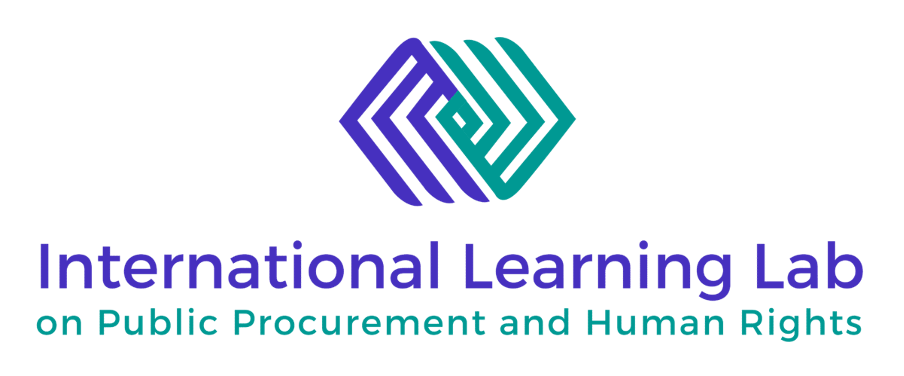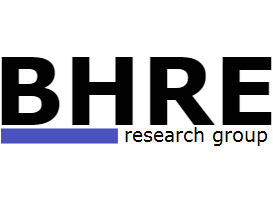SUSTAINABLE PUBLIC PROCUREMENT IN LOCAL GOVERNMENTS ACROSS JAPAN - Kaori Kuroda, August 2018
Sustainable public procurement has become an important issue in Japan. We have witnessed that the Japanese government has committed to contributing to the Sustainable Development Goals (SDGs) that includes “Promoting public procurement practice that are sustainable” in the target 7 of Goal 12. The Tokyo Organizing Committee for Olympic and Paralympic Games (TOCOG) has announced its respect for the UN Guiding Principles on Business and Human Rights (UNGPs) and developed a sustainable sourcing code for goods and services to be procured for the 2020 games based on the UNGPs. The TOCOG has established a Grievance Mechanism, which will receive reports of non-compliance with the sourcing code and respond with a view to resolving reported cases promptly in a fair and transparent manner. In addition, the Government of Japan has launched the development of a National Action Plan on the UNGPs and public procurement is one of the core issues in the Plan. With all mentioned above in mind, public procurement is expected to be a strategic policy instrument toward achieving a sustainable society by integrated approaches of social, environmental and economic aspects in Japan.
Public Procurement in Japan
Public procurement has accounted for more than 16 % of the GDP in Japan in recent years and thus has significant impacts on the internal and external markets of Japan. Shifting public procurement to more a sustainable model would make a great contribution to achieving the SDGs by 2030.
Japan has developed some specific laws and measures to evaluate social and environmental factors other than price in public procurement. The “Law Concerning the Promotion of Procurement of Eco-Friendly Goods and Services by the State and Other Entities,” or “Green Purchasing Law” for short, was enacted in 2000, ahead of many other nations. On other fronts, “The Act of Promotion of Procurement for Persons with Disability” became effective in 2013. In 2016 The Cabinet Office developed guidelines to utilize public procurement and subsidies to evaluate corporations that promote measures such as work-life balance to advance women in workplace. These are a testament to the progress made in the environmental and social aspects of public procurement in the government sector. The reality is, however, that these are implemented independently in efforts to meet individual policy goals, not as part of a comprehensive effort to promote sustainable public procurement as a whole.
Public Procurement of municipal governments in Japan
Although municipal governments do not have a legal obligation to observe the above-mentioned laws, enactment of public contract ordinances has slowly but steadily spread nationwide to avoid the creation of the “government-manufactured working poor” as a result of the race to the bottom in tendering. On the environmental front, green purchasing has been applied widely. Consequently, we at the CSO Network Japan decided to conduct a baseline study of major municipal governments to see how sustainable public procurement is being implemented in each municipality. This study was conducted on February 5 to 27, covering 115 municipal governments, of which 78 responded (67.8%). A summary of the results of public procurement concerning social aspects is as follows[2]:
With regard to the Comprehensive Evaluation Bidding System, which considers factors other than bidding price, 68% of the responding municipal governments (n=52) have introduced this system and have used it frequently.
While 15 municipalities have public contract ordinance or public procurement ordinance, about 60% of all respondents have not considered such ordinances. With regard to the public contract ordinance, there remain some issues concerning how consistent it may be with existing labor laws such as the Minimum Wage Act. It would be more appropriate for the National government to institutionalize this through legislation. In fact, many respondents noted that they closely observe where the national government will go on this matter.
51 or 67% of the municipal governments that responded said they do not include compliance to labor laws regarding the treatment of employees, such as the Labor Standards Act and the Minimum Wage Act, as part of contractor selection requirement in procurement (See Graph 2).
46% of the municipal governments said they consider hiring initiatives for persons with disabilities as a requirement in contractor selection while 51% of the respondents do not consider this matter (see Graph 3).
72% of the municipalities said they do not consider the contractor’s employee safety and health management initiatives as a requirement in contractor selection, while only 25% of the respondents said they recommend such initiatives to one extent or another (See Graph 4).
Only 6 or 8% of the municipal governments that responded said that they consider the Eruboshi certification[3] status of potential contractors as a requirement in contractor selection, while 66 or 87% of the respondents said they do not consider this certification as a positive indicator. However, many respondents stated that they have their own certification and evaluation systems when it comes to participation and advancement of women in the workplace (See Graph 5).
74% of the respondents said they consider the potential contractor’s positive contributions to local community by adding points to the candidate in contractor selection.
The social value criteria that received the highest percentage among the items for contribution to local community was “Disaster response.” Four municipalities responded that they would add points to an entity in which human rights awareness campaigns and trainings are implemented (See Graph 6).
23 or 30% of the responding municipal governments said they have a certification system for a company making community contribution or enhancing corporate social responsibility and 4 municipal governments are considering creating one.
56 or 74% of the municipal governments that responded said they prioritized procurement from local small-medium enterprises as a means of “local production for local consumption” or locally produced materials and goods.
Research limitations and the way forward
“How can public procurement in Japan make community and society more sustainable?” is the question that we have grappled with throughout this baseline study. This research did not completely address social issues centered on human rights that follow the UNGPs and other international standards. We strongly feel that we need further analysis, research and a deeper examination of this. This process may involve exploring the following topics:
The relationship between public procurement as a policy tool and various elements of sustainability including the SDGs;
Issues of standard setting and evaluation methods in how municipal governments objectively assess contributions to regional sustainability; quantitative assessment of public procurement system that facilitates contributions to regional sustainability;
The possibility of visualizing the objective impact that such a public procurement system would have on the regional economy; and
What impact systemic reform at the national level in the national government’s public procurement system may have on municipal government initiatives.
It is necessary to gauge and analyze the gap between what the reality is on the ground and how public procurement should be in order for it to support a sustainable future. It would be worthwhile exploring how the findings of our baseline study can be linked to the issue of business and human rights or other standards regarding responsible supply chain management.
Finally, it is hoped that the development of the National Action Plan on Business and Human rights will be a good opportunity to review public procurement in Japan. It is also desirable that the sustainable sourcing code for the 2020 Tokyo Olympic and Paralympic Games will become a legacy for public procurement.
Graph 2: Compliance with labor laws regarding treatment of employees, such as the Labor Standards Act and the Minimum Wage Act
Graph 2
1 We require documented reports from the potential contractor and check their compliance. 7
2 We do not require the potential contractor to submit a report, but clearly state that compliance to labor laws is a requirement in placing a bid. 15
3 We do not include this matter in the tendering requirements. 51
No Answer 3
Total Number of Reponses 76
Graph 3: Employment initiatives for persons with disabilities (Choose 1 answer option)
Graph 3
1 We require documented reports from the potential contractor on their data on these initiatives and we double check by looking into the actual conditions. 7
2 We require documented reports from the potential contractor on their data on their initiatives, but do not double check the actual conditions ourselves. 21
3 We do not require the potential contractor to submit a report, but clearly state that employee safety and health management initiatives are to be recommended. 8
4 We do not include this matter in the tendering requirements. 39
No Answer 2
Total Number of Reponses 76
Graph 4: Employees’ safety and health management initiatives based on the Industrial Safety and Health Act and other applicable legislation (Choose 1 answer option)
Graph 4
1 We require documented reports from the potential contractor on their data on these initiatives and we double check by looking into the actual conditions. 3
2 We require documented reports from the potential contractor on their data on their initiatives, but do not double check the actual conditions ourselves. 6
3 We do not require the potential contractor to submit a report, but clearly state that employee safety and health management initiatives are to be recommended. 10
4 We do not include this matter in the tendering requirements. 55
No Answer 2
Total Number of Reponses 76
Graph 5: The Eruboshi certification, which is the certification system for businesses that promote women’s participation and advancement in the workplace
Graph 5
1 We require documented reports from the potential contractor if it is certified and will receive additional points in contractor selection. 6
2 We require documented reports from the potential contractor on their data on their initiatives. 0
3 We do not require the potential contractor to submit a report, but clearly state that women’s participation and advancement in the workplace are to be recommended. 2
4 We do not include this matter in the tendering requirements. 66
No Answer 2
Total Number of Reponses 76
Graph 6: Social value to choose by adding points to the potential contractor in contractor selection (Choose all that apply)
Graph 6
1 Employment of new graduates 11
2 Employment of the elderly 3
3 Employment of probationer or parolees 11
4 Employment of children’s care home graduates (those who lived under state care as minors) 1
5 Disaster response 48
6 Volunteer fire brigade 28
7 Contributions regarding livestock epidemics 7
8 Traffic safety 5
9 Promotion of health check-ups 3
10 Human rights awareness campaigns and trainings 4
11 Promotion of agriculture, forestry and fisheries 2
12 Promotion of local specialty products 4
Other
[1] http://www.procuraplus.org/manual/ (visited on July 24, 2018)
[2] CSO Network Japan (2018) “Japanese Municipal Government Survey Results on Public Procurement, Public Contract Regulations, and Local Sustainability.”
[3] Eruboshi certification is the certification system for businesses that promote women’s participation and advancement in the workplace based on the Act on Promotion of Women’s Participation.

